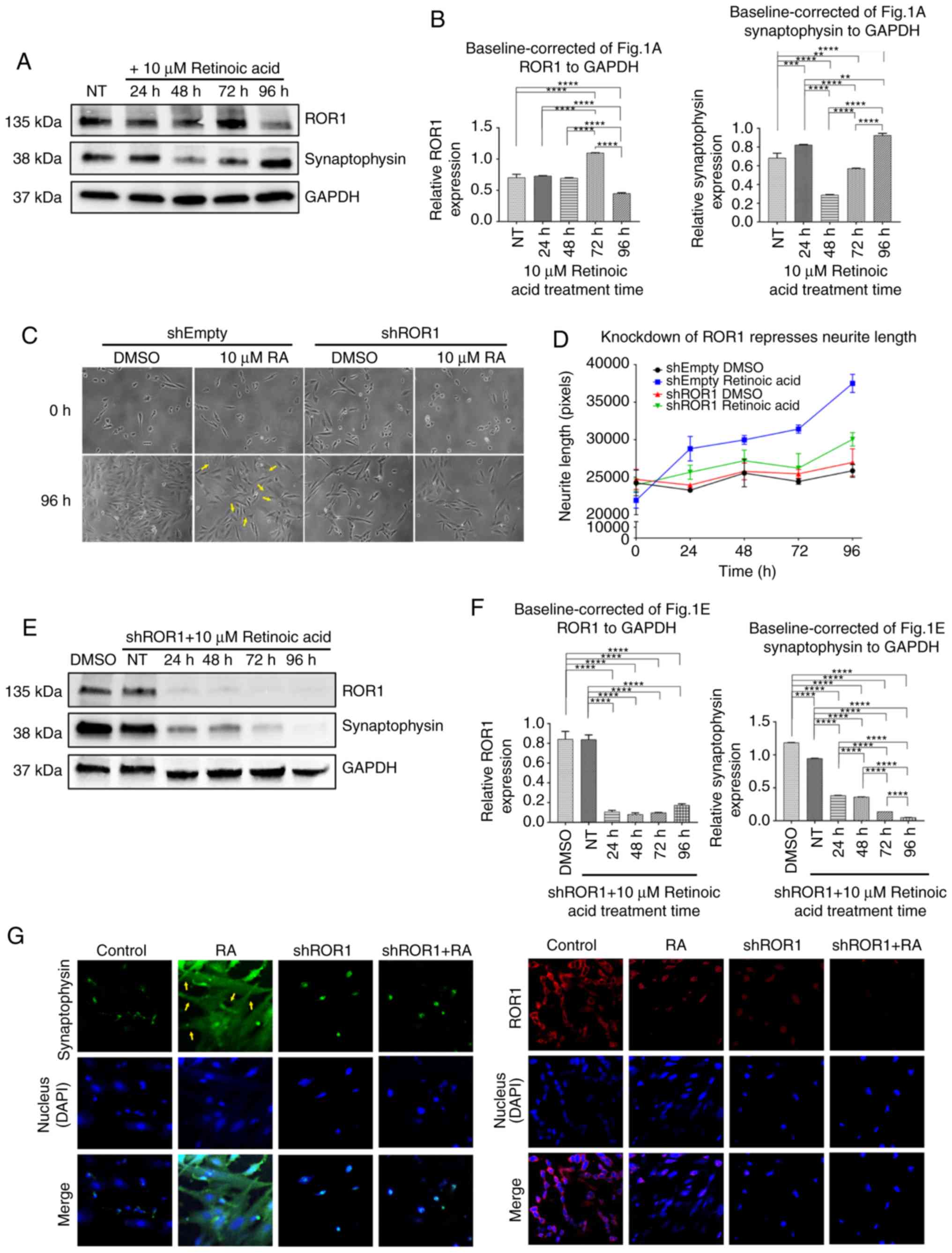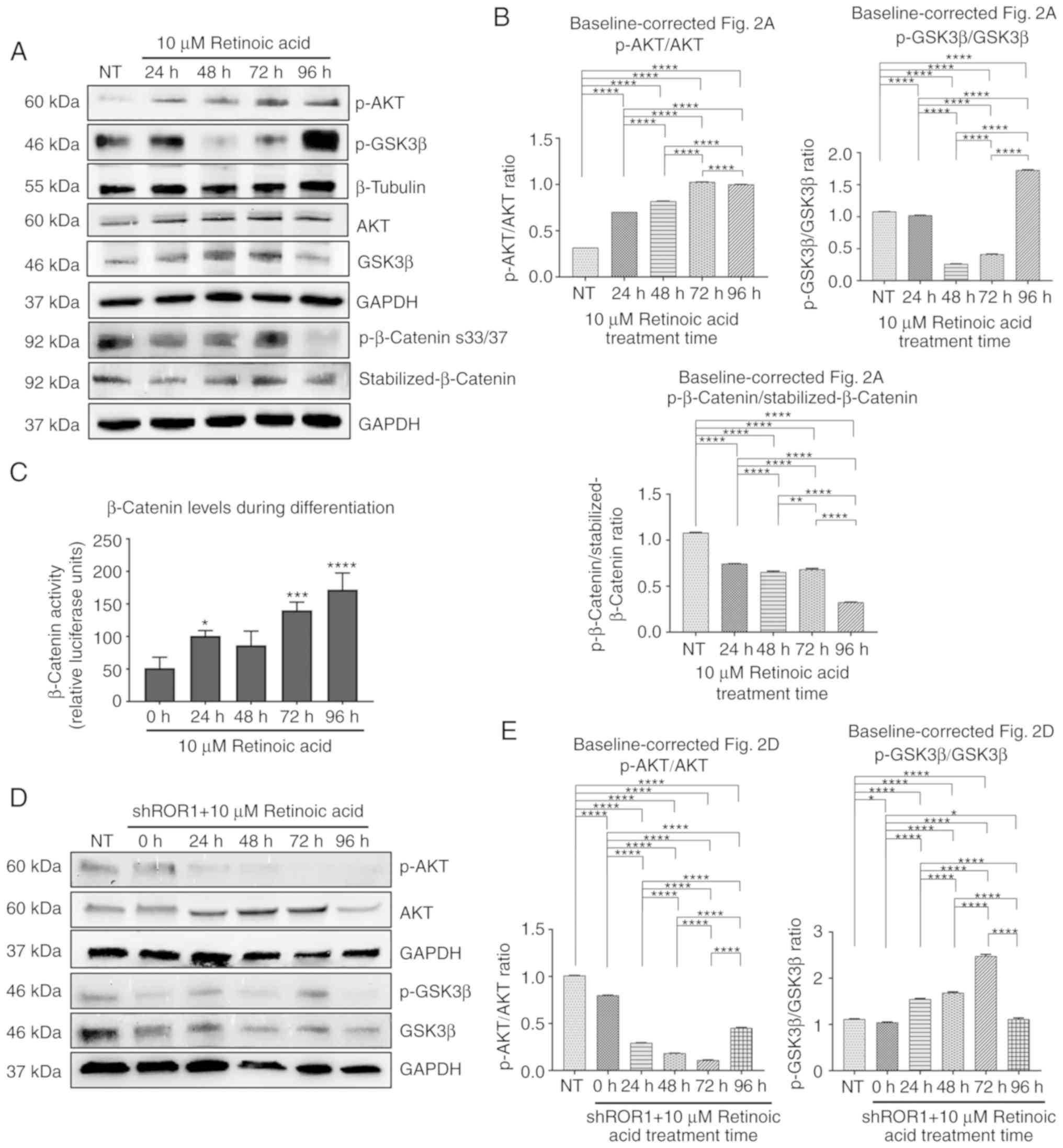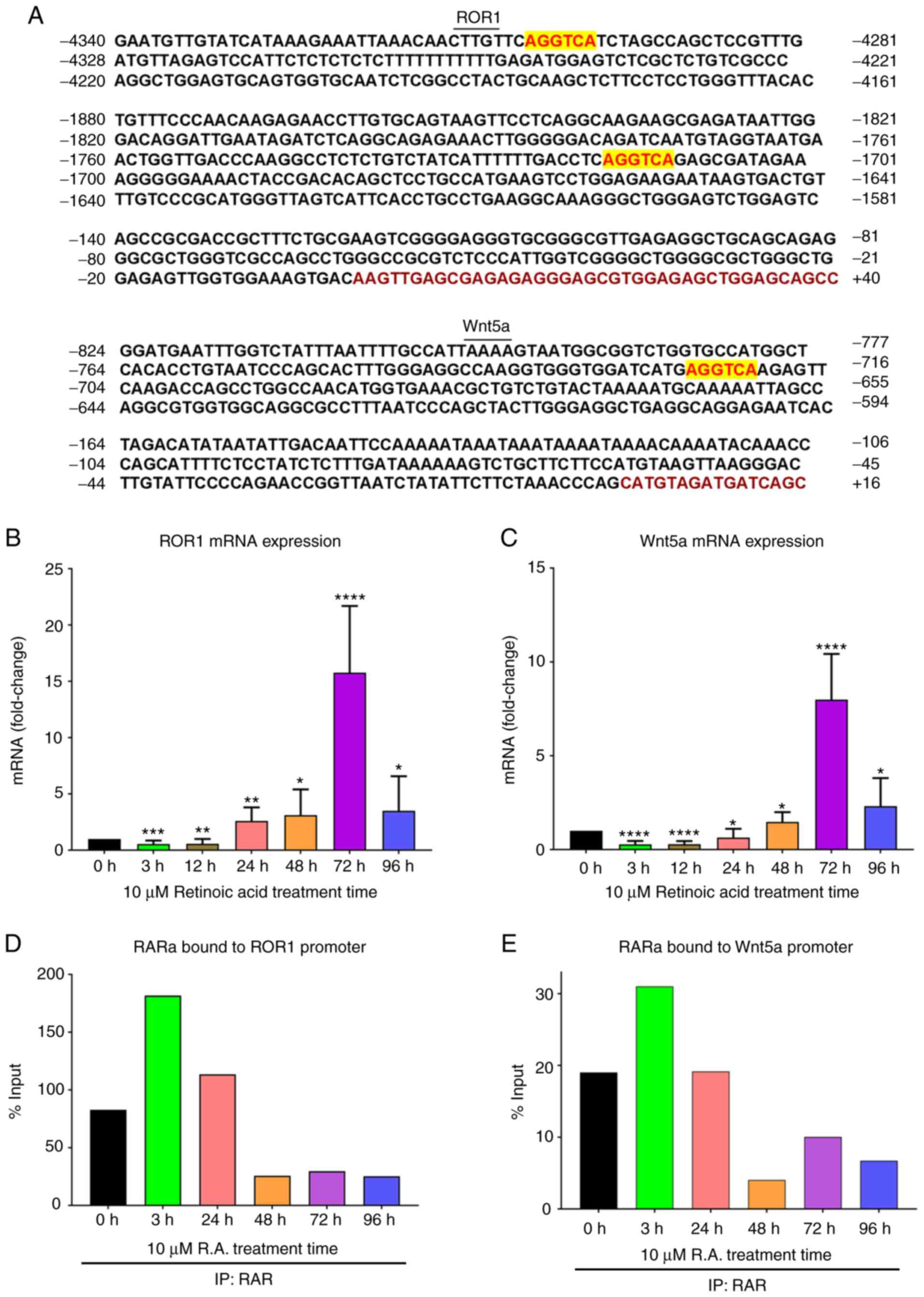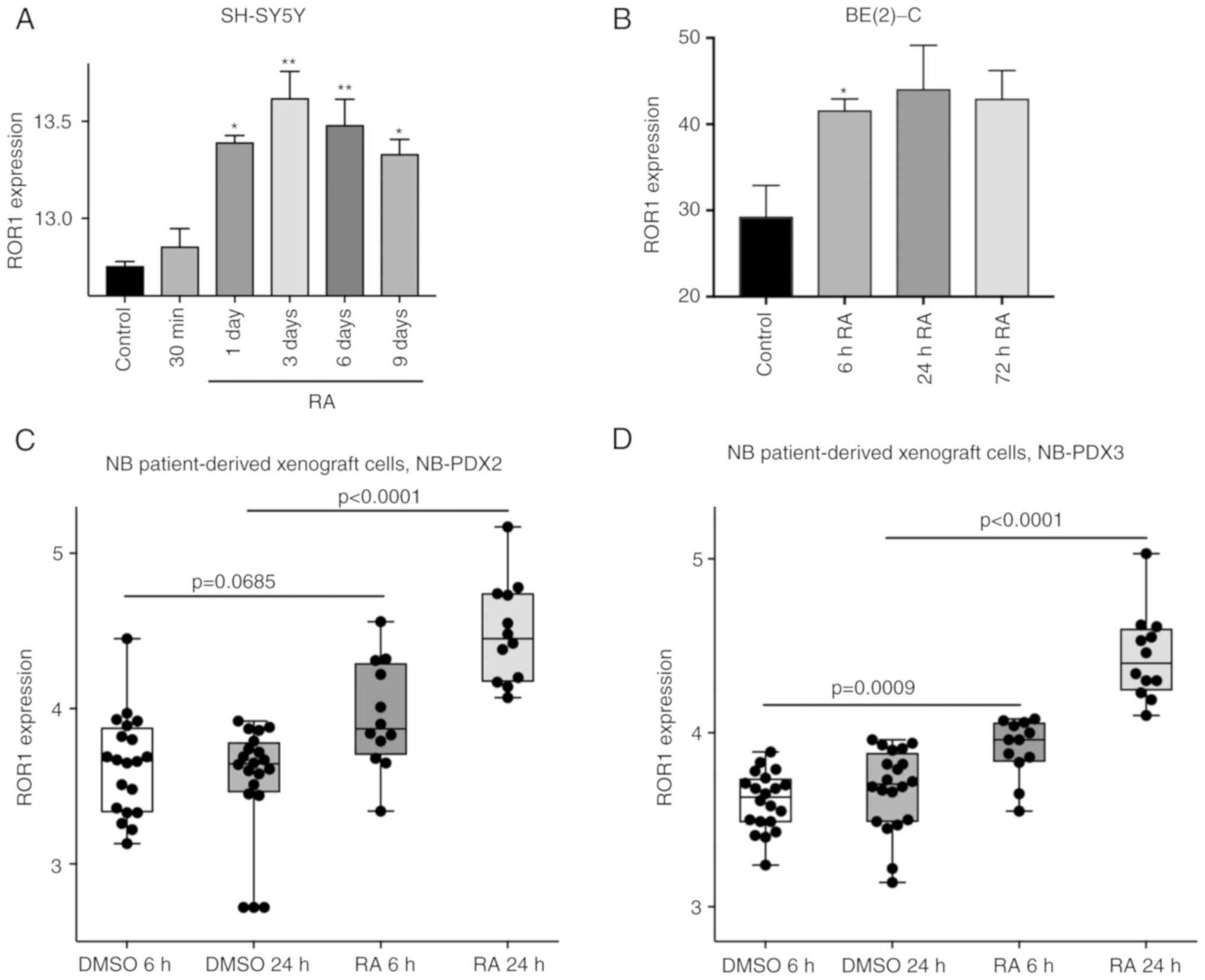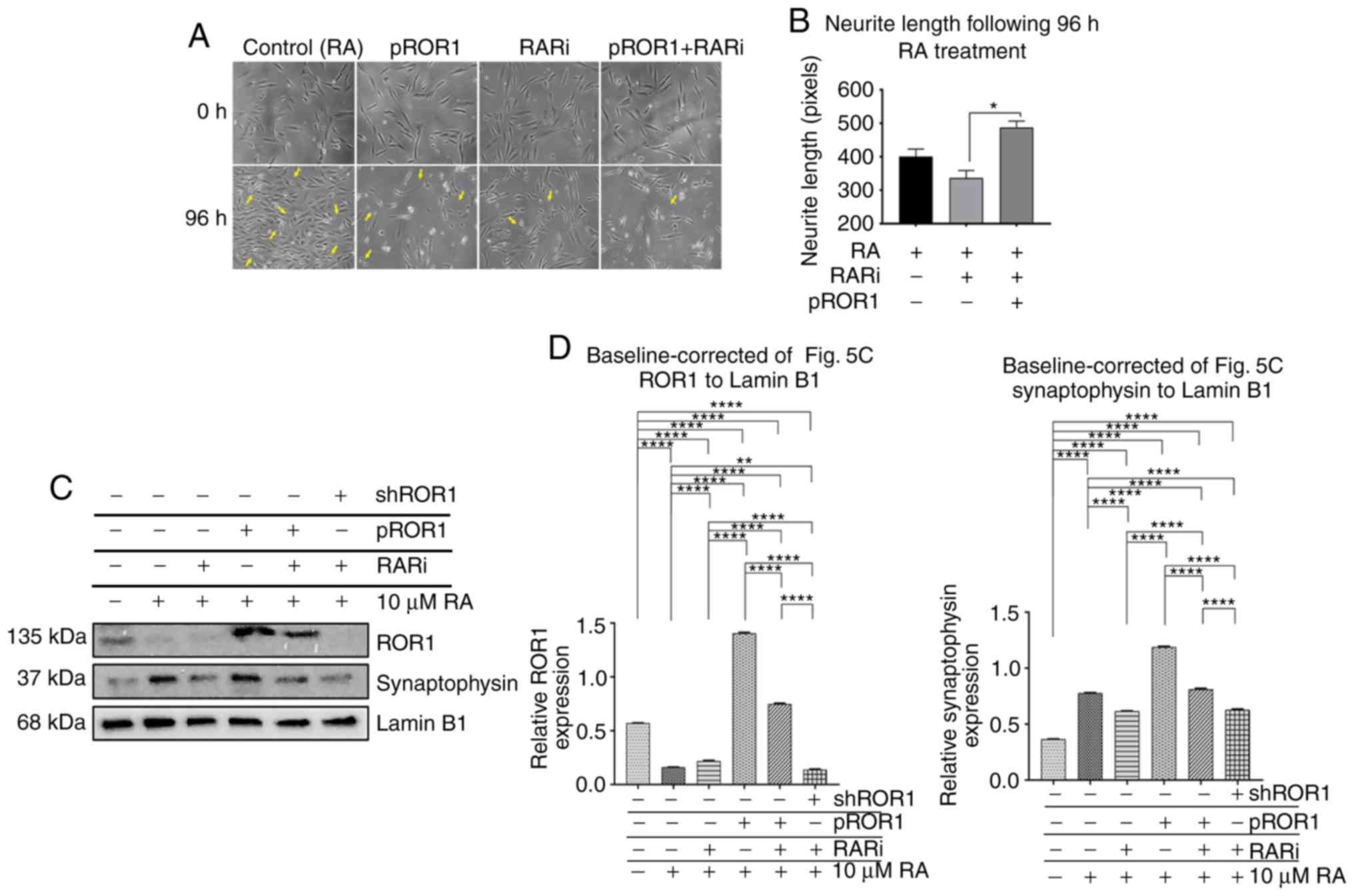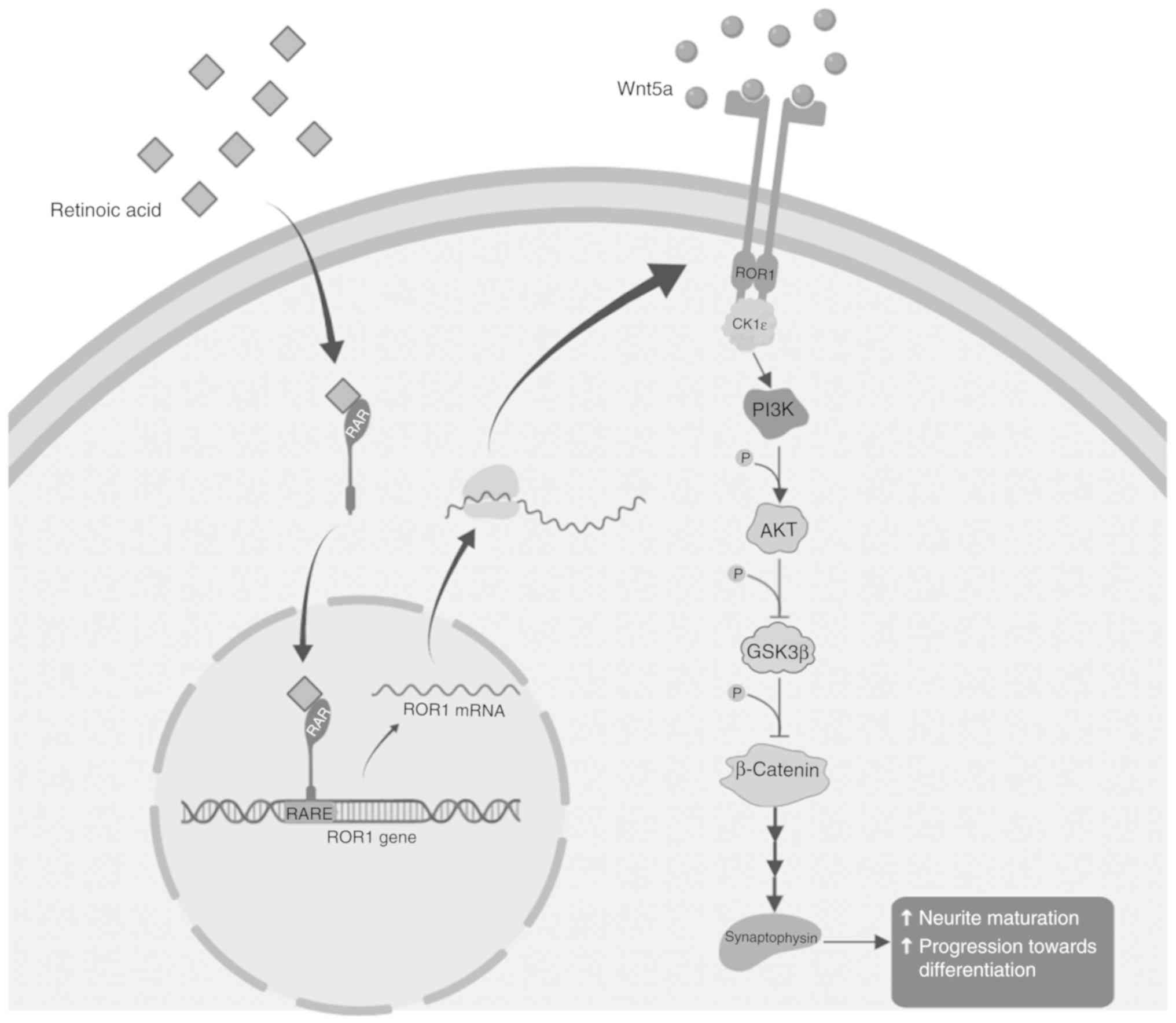|
1
|
Mitchell WG, Davalos-Gonzalez Y, Brumm VL,
Aller SK, Burger E, Turkel SB, Borchert MS, Hollar S and Padilla S:
Opsoclonus-ataxia caused by childhood neuroblastoma: Developmental
and neurologic sequelae. Pediatrics. 109:86–98. 2002.PubMed/NCBI
|
|
2
|
Yahya FS and Al-Shami HA: Posterior
mediastinal neuroblastoma masked as flaccid paraparesis in a 3 year
child. Neurosciences (Riyadh). 24:320–323. 2019. View Article : Google Scholar : PubMed/NCBI
|
|
3
|
Louis CU and Shohet JM: Neuroblastoma:
Molecular pathogenesis and therapy. Annu Rev Med. 66:49–63. 2015.
View Article : Google Scholar : PubMed/NCBI
|
|
4
|
Habib EE, El-Kashef AT and Fahmy ES:
Management of neuroblastoma: A study of first-and second-line
chemotherapy responses, a single institution experience. Oncol Rev.
6:e32012. View Article : Google Scholar : PubMed/NCBI
|
|
5
|
Mandal A: Neuroblastoma treatment.
(online) News- Medical.net. Available at:
https://www.news-medical.net/health/Neuroblastoma-Treatment.aspx.
Feb 27–2019
|
|
6
|
Adamson PC, Matthay KK, O'Brien M, Reaman
GH, Sato JK and Balis FM: A phase 2 trial of all-trans-retinoic
acid in combination with interferon-alpha2a in children with
recurrent neuroblastoma or Wilms tumor: A pediatric oncology
branch, NCI and children's oncology group study. Pediatr Blood
Cancer. 49:661–665. 2007. View Article : Google Scholar : PubMed/NCBI
|
|
7
|
Reynolds CP, Matthay KK, Villablanca JG
and Maurer BJ: Retinoid therapy of high-risk neuroblastoma. Cancer
Lett. 197:185–192. 2003. View Article : Google Scholar : PubMed/NCBI
|
|
8
|
Shipley MM, Mangold CA and Szpara ML:
Differentiation of the SH-SY5Y human neuroblastoma cell line. J Vis
Exp. 17:531932016.
|
|
9
|
Canon E, Cosgaya JM, Scsucova S and Aranda
A: Rapid effects of retinoic acid on CREB and ERK phosphorylation
in neuronal cells. Mol Biol Cell. 15:5583–5592. 2004. View Article : Google Scholar : PubMed/NCBI
|
|
10
|
Allenby G, Bocquel MT, Saunders M, Kazmer
S, Speck J, Rosenberger M, Lovey A, Kastner P, Grippo JF and
Chambon P: Retinoic acid receptors and retinoid X receptors:
Interactions with endogenous retinoic acids. Proc Natl Acad Sci
USA. 90:30–34. 1993. View Article : Google Scholar : PubMed/NCBI
|
|
11
|
Nagai J, Yazawa T, Okudela K, Kigasawa H,
Kitamura H and Osaka H: Retinoic acid induces neuroblastoma cell
death by inhibiting proteasomal degradation of retinoic acid
receptor alpha. Cancer Res. 64:7910–7917. 2004. View Article : Google Scholar : PubMed/NCBI
|
|
12
|
Petrova IM, Malessy MJ, Verhaagen J,
Fradkin LG and Noordermeer JN: Wnt signaling through the Ror
receptor in the nervous system. Mol Neurobiol. 49:303–315. 2014.
View Article : Google Scholar : PubMed/NCBI
|
|
13
|
Rangel MC, Bertolette D, Castro NP,
Klauzinska M, Cuttitta F and Salomon DS: Developmental signaling
pathways regulating mammary stem cells and contributing to the
etiology of triple-negative breast cancer. Breast Cancer Res Treat.
156:211–226. 2016. View Article : Google Scholar : PubMed/NCBI
|
|
14
|
Fultang N, Illendula A, Chen B, Wu C,
Jonnalagadda S, Baird N, Klase Z and Peethambaran B: Strictinin, a
novel ROR1-inhibitor, represses triple negative breast cancer
survival and migration via modulation of PI3K/AKT/GSK3ß activity.
PLoS One. 14:e02177892019. View Article : Google Scholar : PubMed/NCBI
|
|
15
|
Borcherding N, Kusner D, Liu GH and Zhang
W: ROR1, an embryonic protein with an emerging role in cancer
biology. Protein Cell. 5:496–502. 2014. View Article : Google Scholar : PubMed/NCBI
|
|
16
|
Blanc E, Roux GL, Benard J and Raguenez G:
Low expression of Wnt-5a gene is associated with high-risk
neuroblastoma. Oncogene. 24:1277–1283. 2005. View Article : Google Scholar : PubMed/NCBI
|
|
17
|
Bastien J, Plassat JL, Payrastre B and
Rochette-Egly C: The phosphoinositide 3-kinase/Akt pathway is
essential for the retinoic acid-induced differentiation of F9
cells. Oncogene. 25:2040–2047. 2006. View Article : Google Scholar : PubMed/NCBI
|
|
18
|
Akkuratov EE, Wu J, Sowa D, Shah ZA and
Liu L: Ouabain-induced signaling and cell survival in SK-N-SH
neuroblastoma cells differentiated by retinoic acid. CNS Neurol
Disord Drug Targets. 14:1343–1349. 2015. View Article : Google Scholar : PubMed/NCBI
|
|
19
|
Hämmerle B, Yañez Y, Palanca S, Cañete A,
Burks DJ, Castel V and Font de Mora J: Targeting neuroblastoma stem
cells with retinoic acid and proteasome inhibitor. PLoS One.
8:e767612013. View Article : Google Scholar : PubMed/NCBI
|
|
20
|
Niewiarowska-Sendo A, Patrzalek K, Kozik A
and Guevara-Lora I: The effect of differentiation agents on
inflammatory and oxidative responses of the human neuroblastoma
cell line SK-N-SH. Acta Biochim Pol. 62:435–443. 2015. View Article : Google Scholar : PubMed/NCBI
|
|
21
|
Gassmann M, Grenacher B, Rohde B and Vogel
J: Quantifying Western blots: Pitfalls of densitometry.
Electrophoresis. 30:1845–1855. 2009. View Article : Google Scholar : PubMed/NCBI
|
|
22
|
Tan HY and Ng TW: Accurate step wedge
calibration for densitometry of electrophoresis gels. Opt Commun.
281:3013–3017. 2008. View Article : Google Scholar
|
|
23
|
Pemberton K, Mersman B and Xu F: Using
ImageJ to assess neurite outgrowth in mammalian cell cultures:
Research data quantification exercises in undergraduate
neuroscience lab. J Undergrad Neurosci Educ. 16:A186–A194.
2008.
|
|
24
|
Clevers H: Wnt/beta-catenin signaling in
development and disease. Cell. 127:469–480. 2006. View Article : Google Scholar : PubMed/NCBI
|
|
25
|
Livak KJ and Schmittgen TD: Analysis of
relative gene expression data using real-time quantitative PCR and
the 2(-Delta Delta C(T)) method. Methods. 25:402–408. 2001.
View Article : Google Scholar : PubMed/NCBI
|
|
26
|
Wang Y, Chakravarty P, Ranes M, Kelly G,
Brooks PJ, Neilan E, Stewart A, Schiavo G and Svejstrup JQ:
Dysregulation of gene expression as a cause of cockayne syndrome
neurological disease. Proc Natl Acad Sci USA. 111:14454–14459.
2014. View Article : Google Scholar : PubMed/NCBI
|
|
27
|
Frumm SM, Fan ZP, Ross KN, Duvall JR,
Gupta S, VerPlank L, Suh BC, Holson E, Wagner FF, Smith WB, et al:
Selective HDAC1/HDAC2 inhibitors induce neuroblastoma
differentiation. Chem Biol. 20:713–725. 2013. View Article : Google Scholar : PubMed/NCBI
|
|
28
|
Almstedt E, Elgendy R, Hekmati N, Rosén E,
Wärn C, Olsen TK, Dyberg C, Doroszko M, Larsson I, Sundström A, et
al: Integrative discovery of treatments for high-risk
neuroblastoma. Nat Commun. 11:712020. View Article : Google Scholar : PubMed/NCBI
|
|
29
|
Ye C, Ho DJ, Neri M, Yang C, Kulkarni T,
Randhawa R, Henault M, Mostacci N, Farmer P, Renner S, et al:
DRUG-seq for miniaturized high-throughput transcriptome profiling
in drug discovery. Nat Commun. 9:43072018. View Article : Google Scholar : PubMed/NCBI
|
|
30
|
Koster J, Volckmann R, Zwijnenburg D,
Molenaar P and Versteeg R: R2: Genomics analysis and visualization
platform. Cancer Res. 24902019.
|
|
31
|
Tarsa L and Goda Y: Synaptophysin
regulates activity-dependent synapse formation in cultured
hippocampal neurons. Proc Natl Acad Sci USA. 99:1012–1016. 2002.
View Article : Google Scholar : PubMed/NCBI
|
|
32
|
Rogers HA, Ward JH, Miller S, Lowe J,
Coyle B and Grundy RG: The role of the WNT/ß-catenin pathway in
central nervous system primitive neuroectodermal tumours (CNS
PNETs). Br J Cancer. 108:2130–2141. 2013. View Article : Google Scholar : PubMed/NCBI
|
|
33
|
Kam RK, Deng Y, Chen Y and Zhao H:
Retinoic acid synthesis and functions in early embryonic
development. Cell Biosci. 2:112012. View Article : Google Scholar : PubMed/NCBI
|
|
34
|
Donovan M, Olofsson B, Gustafson AL,
Dencker L and Eriksson U: The cellular retinoic acid binding
proteins. J Steroid Biochem Mol Biol. 53:459–465. 1995. View Article : Google Scholar : PubMed/NCBI
|
|
35
|
Lindley D, Goranov B, Ponthan F and
Redfern C: Abstract# 5280: The role of retinoic acid receptors in
differentiation, gene expression and apoptosis of neuroblastoma.
Cancer Res. 69 (9 Suppl):S52802009.
|
|
36
|
Kedishvili NY: Retinoic acid synthesis and
degradation. Subcell Biochem. 81:127–161. 2016. View Article : Google Scholar : PubMed/NCBI
|
|
37
|
Peinemann F, van Dalen EC, Enk H and
Berthold F: Retinoic acid postconsolidation therapy for high-risk
neuroblastoma patients treated with autologous haematopoietic stem
cell transplantation. Cochrane Database Syst Rev.
8:CD0106852017.PubMed/NCBI
|
|
38
|
Chen MC, Hsu SL, Lin H and Yang TY:
Retinoic acid and cancer treatment. Biomedicine (Taipei). 4:222014.
View Article : Google Scholar : PubMed/NCBI
|
|
39
|
Bown N: Neuroblastoma tumour genetics:
Clinical and biological aspects. J Clin Pathol. 54:897–910. 2001.
View Article : Google Scholar : PubMed/NCBI
|
|
40
|
Boeva V, Louis-Brennetot C, Peltier A,
Durand S, Pierre-Eugene C, Raynal V, Etchevers HC, Thomas S,
Lermine A, Daudigeos-Dubus E, et al: Heterogeneity of neuroblastoma
cell identity defined by transcriptional circuitries. Nat Genet.
49:1408–1413. 2017. View Article : Google Scholar : PubMed/NCBI
|
|
41
|
Ross RA, Biedler JL and Spengler BA: A
role for distinct cell types in determining malignancy in human
neuroblastoma cell lines and tumors. Cancer Lett. 197:35–39. 2003.
View Article : Google Scholar : PubMed/NCBI
|
|
42
|
Qiao J, Paul P, Lee S, Qiao L, Josifi E,
Tiao JR and Chung DH: PI3K/AKT and ERK regulate retinoic
acid-induced neuroblastoma cellular differentiation. Biochem
Biophys Res Commun. 424:421–426. 2012. View Article : Google Scholar : PubMed/NCBI
|
|
43
|
Fultang N, Illendula A, Lin J, Pandey MK,
Klase Z and Peethambaran B: ROR1 regulates chemoresistance in
Breast Cancer via modulation of drug efflux pump ABCB1. Sci Rep.
10:18212020. View Article : Google Scholar : PubMed/NCBI
|
|
44
|
O'Connell MP, Marchbank K, Webster MR,
Valiga AA, Kaur A, Vultur A, Li L, Herlyn M, Villanueva J, Liu Q,
et al: Hypoxia induces phenotypic plasticity and therapy resistance
in melanoma via the tyrosine kinase receptors ROR1 and ROR2. Cancer
Discov. 3:1378–1393. 2013. View Article : Google Scholar : PubMed/NCBI
|
|
45
|
Park H, Awasthi A, Ayello J, Chu Y,
Riddell SR, Rosenblum J, Lee DA and Cairo MS: ROR1-specific
chimeric antigen receptor (CAR) NK cell immunotherapy for high risk
neuroblastomas and sarcomas. Biol Blood Marrow Transplant.
23:S136–S137. 2017. View Article : Google Scholar
|
|
46
|
Dave H, Butcher D, Anver M and Bollard CM:
ROR1 and ROR2-novel targets for neuroblastoma. Pediatr Hematol
Oncol. 36:352–364. 2019. View Article : Google Scholar : PubMed/NCBI
|















